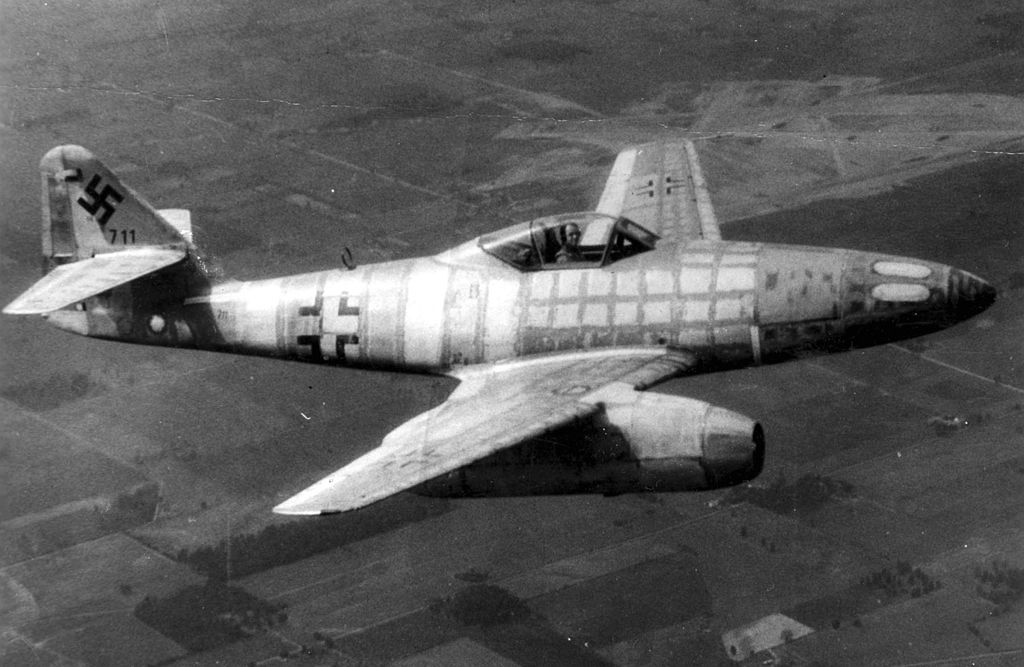
Story Highlights
- Historical event:
- 18 July 1942
- The test flight was conducted on this day by Fritz Wendel, who took off from a runway in Leipheim, Bavaria (17 km from Ulm, birthplace of Albert Einstein). The Me-262 jet fighter went into production as the first jet aircraft in history. Parts were produced by forced laborers from the Mauthausen-Gusen concentration camp in Austria. Germany's propaganda had high expectations from jet fighters, so they were depicted as a weapon that would change the outcome of the war.
On this day, Nazi Germany tested an aircraft with a revolutionary engine.
Unlike the previous propeller-powered aircraft, the new Messerschmitt Me-262 had jet engines. A jet (turbo jet) engine can achieve significantly higher speed and greater thrust than a conventional engine in propeller-powered aircraft. At first, BMW 003 jet engines were installed on the Messerschmitt Me-262, but they soon proved to be unreliable, and were eventually replaced with Junkers Jumo 004 turbojet engines (Jumo stands for “Junkers Motoren”).
Messerschmitt Me-262 aircraft had two such engines, each with a thrust of about 8,800 Newtons (performance of jet engines is described quantitatively in Newtons, not in horsepower as is the case with piston engines). The whole Me-262 weighed about 7 tons, had a top speed of 900 km/h (propeller-powered aircraft usually achieved only half as much, and only rarely over 600 or 700 km/h). The test flight was conducted on this day by Fritz Wendel, who took off from a runway in Leipheim in Bavaria (17 km from Ulm, birthplace of Albert Einstein).
It is interesting that the British tested their first jet fighter Gloster Meteor only nine months later. The Me-262 jet fighter went into production as the first jet aircraft in history and its parts were produced by forced laborers from the Mauthausen-Gusen concentration camp in Austria (near Linz), in huge underground tunnels. Germany’s propaganda had high expectations of the jet fighters, so they were depicted as a weapon that would change the outcome of the war.




